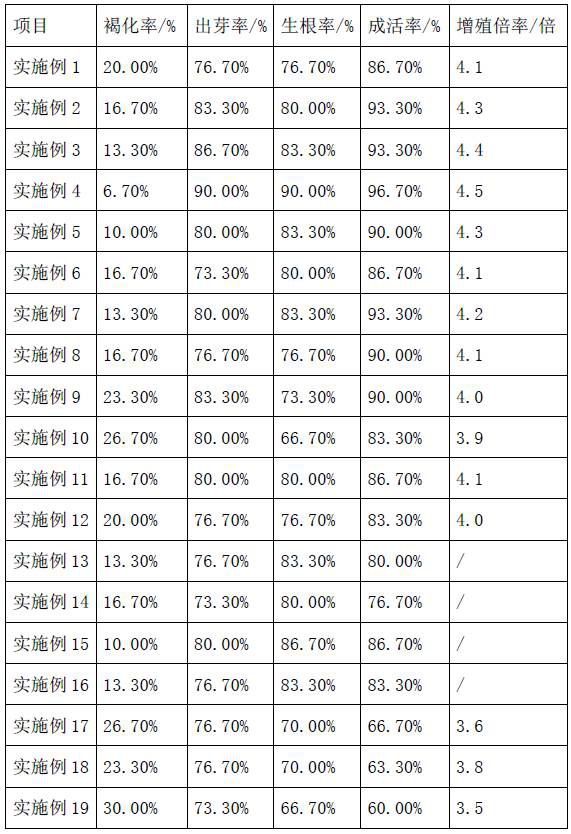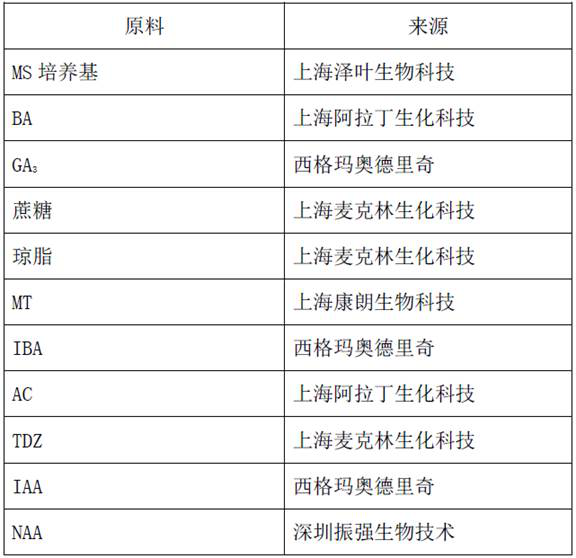Breeding method for clematis seedling tissue culture
A tissue culture, clematis technology, applied in horticultural methods, botanical equipment and methods, horticulture and other directions, can solve the problems of short cutting time, unstable rooting of cuttings, low survival rate, etc. The effect of rapid breeding and high survival rate
- Summary
- Abstract
- Description
- Claims
- Application Information
AI Technical Summary
Problems solved by technology
Method used
Image
Examples
Embodiment 1- Embodiment 4
[0035] Embodiment 1 to embodiment 4 all adopt the same breeding method to breed clematis, and the starting medium and proliferation medium in embodiment 1 to embodiment 4 are all based on MS medium, and the rooting medium is 1 / 2MS Based on medium (meaning that the content of macroelements is half of that of MS medium, and the amount of other ingredients is the same), the pH of starting medium, proliferation medium and starting medium are all 5.80, the difference lies in the concentration of other raw material components different, as follows:
[0036] Table 2 Concentrations of raw material components in initiation medium, proliferation medium and rooting medium
[0037]
[0038] Take embodiment 4 as an example to illustrate the breeding method of clematis seedlings, specifically as follows:
[0039] S1. Selection of explants: in April in spring, select young shoots that are robust and free of diseases and insect pests, cut off branches with 3 nodes from the top buds, remov...
Embodiment 5
[0045] The difference between this example and Example 4 is that the concentration of BA in the starting medium is 1.2 mg / L.
Embodiment 6
[0047] The only difference between this example and Example 4 is that the concentration of BA in the starting medium is 2.3 mg / L.
PUM
 Login to View More
Login to View More Abstract
Description
Claims
Application Information
 Login to View More
Login to View More - R&D
- Intellectual Property
- Life Sciences
- Materials
- Tech Scout
- Unparalleled Data Quality
- Higher Quality Content
- 60% Fewer Hallucinations
Browse by: Latest US Patents, China's latest patents, Technical Efficacy Thesaurus, Application Domain, Technology Topic, Popular Technical Reports.
© 2025 PatSnap. All rights reserved.Legal|Privacy policy|Modern Slavery Act Transparency Statement|Sitemap|About US| Contact US: help@patsnap.com



